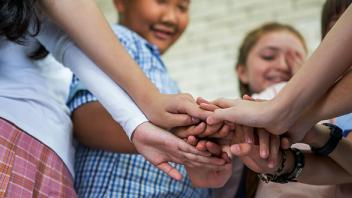The basics
9 Ways to Teach Social Skills in Your Classroom
Strong social skills are essential for success in life. Discover nine ways to create a more inclusive classroom and support social skill development in your students.
10 Things You Can Do to Make Your Class Socially Inclusive
The social curriculum conveys the values, belief systems, and expectations of behavior in school. It is just as important as the academic curriculum, but is often “hidden” for children with learning challenges. Here you’ll find some effective strategies to intentionally facilitate social inclusion in your classroom and school-wide.
Preparing Young Children for the Inclusion of Children with Disabilities into the Classroom
Inclusive preschool classrooms are in the best interest of all young children: including children with disabilities results in greater empathy and acceptance of differences among all children and in improved academic, social, and behavioral outcomes for children with disabilities. Despite its benefits, inclusion still poses many challenges for teachers. Children with disabilities may exhibit a variety of behaviors that differ from those of their peers. Here are some tips for making your classroom more inclusive and helping all students be successful! (NAEYC )
Standing Up to Bullying: Children’s Books to Build Social and Emotional Skills
Learn some basic facts about bullying, a growing problem affecting our schools and our communities. Children’s books can help our kids see the world from different perspectives and build empathy. In this article, you’ll find books we recommend for strengthening social and emotional learning, as well as books that deal with bullying head-on.
Inclusion Beyond the Classroom
Discover 10 ways that schools can create a culture of inclusion for school activities that take place outside of the regular curriculum, including science fairs, school plays, choir, band, sports, and more.
Include at Recess
Have you ever felt like recess is the hardest part of the day to support? In this video blog, Paula Kluth shares some ideas options for inclusion on the blacktop and beyond.
Peer Support Programs for Students with Autism
Regardless of the grade level or the area of need, peers have been crucial in helping students with autism spectrum disorder to succeed in typical school and community activities. Here are some suggestions for using peer supports in your school.
The hidden curriculum
Teaching the hidden curriculum every day
Understanding build empathy
See our full video interview with autism expert Brenda Smith Myles
From our partners
Classroom Activity to Identify and Celebrate Students’ Strengths
When you have struggling students in your class, it’s not uncommon to focus on the skills that need improvement. That’s natural — knowing your students’ challenges helps you support their learning. However, knowing their strengths is an equally important way to support their continued growth in those areas. This crafty activity allows students to identify and reflect on their skills and abilities by creating a strengths chain. (From Understood )
